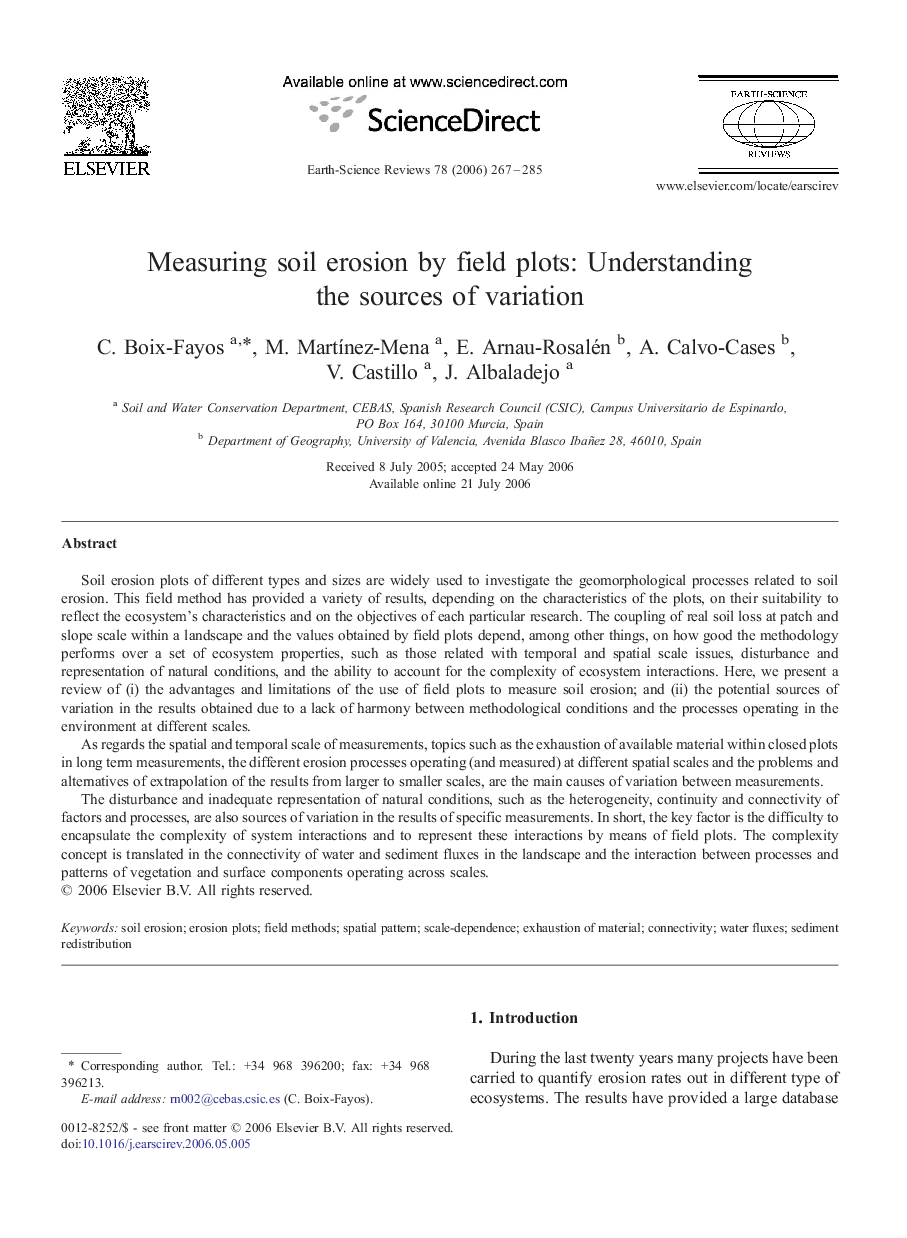| Article ID | Journal | Published Year | Pages | File Type |
|---|---|---|---|---|
| 4726457 | Earth-Science Reviews | 2006 | 19 Pages |
Soil erosion plots of different types and sizes are widely used to investigate the geomorphological processes related to soil erosion. This field method has provided a variety of results, depending on the characteristics of the plots, on their suitability to reflect the ecosystem's characteristics and on the objectives of each particular research. The coupling of real soil loss at patch and slope scale within a landscape and the values obtained by field plots depend, among other things, on how good the methodology performs over a set of ecosystem properties, such as those related with temporal and spatial scale issues, disturbance and representation of natural conditions, and the ability to account for the complexity of ecosystem interactions. Here, we present a review of (i) the advantages and limitations of the use of field plots to measure soil erosion; and (ii) the potential sources of variation in the results obtained due to a lack of harmony between methodological conditions and the processes operating in the environment at different scales.As regards the spatial and temporal scale of measurements, topics such as the exhaustion of available material within closed plots in long term measurements, the different erosion processes operating (and measured) at different spatial scales and the problems and alternatives of extrapolation of the results from larger to smaller scales, are the main causes of variation between measurements.The disturbance and inadequate representation of natural conditions, such as the heterogeneity, continuity and connectivity of factors and processes, are also sources of variation in the results of specific measurements. In short, the key factor is the difficulty to encapsulate the complexity of system interactions and to represent these interactions by means of field plots. The complexity concept is translated in the connectivity of water and sediment fluxes in the landscape and the interaction between processes and patterns of vegetation and surface components operating across scales.
